Bradbury Building
Skylit atrium, ornate ironwork, historic elevators, cinematic beauty
Skylit atrium, ornate ironwork, historic elevators, cinematic beauty

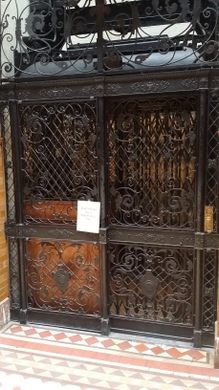
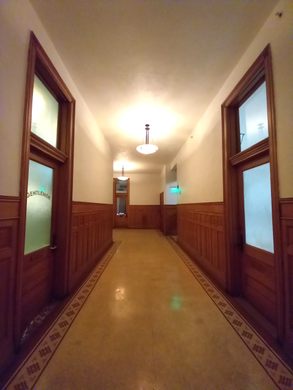
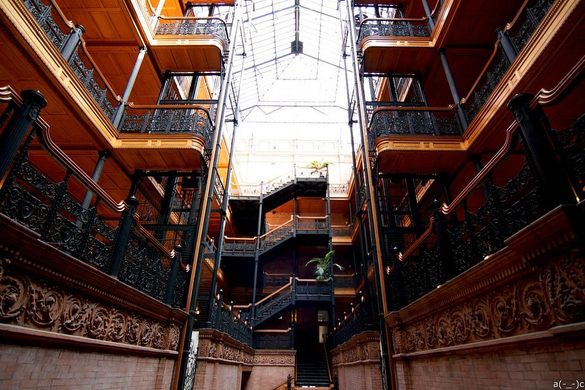
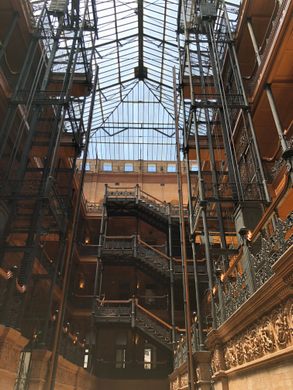

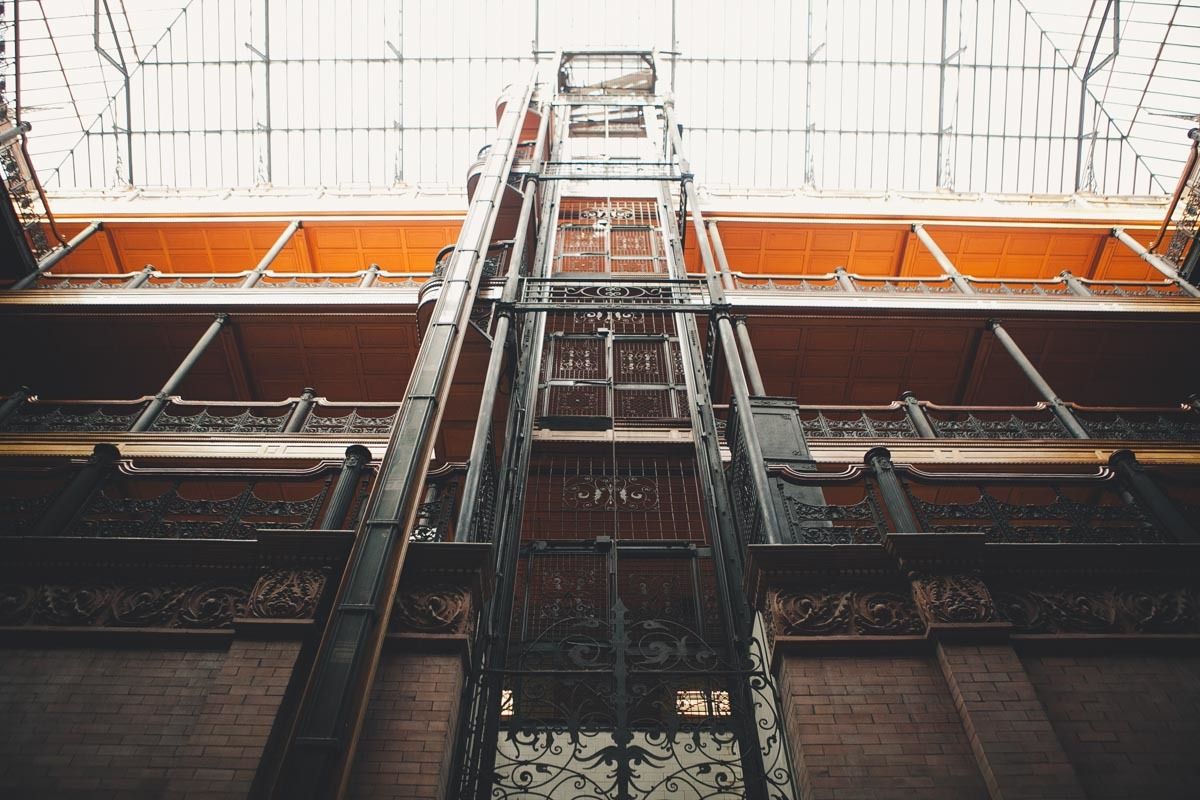


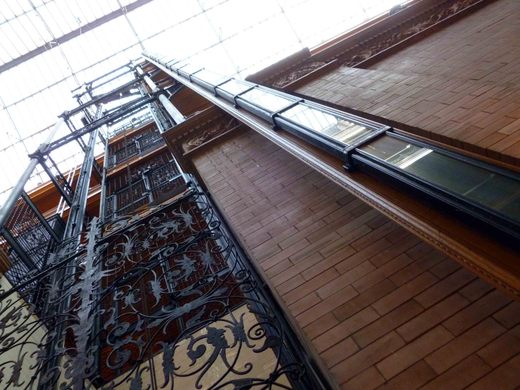


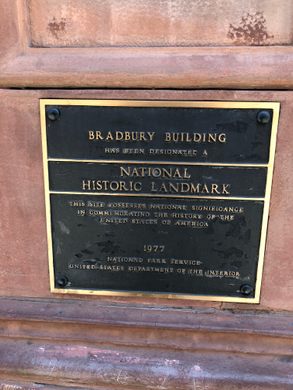














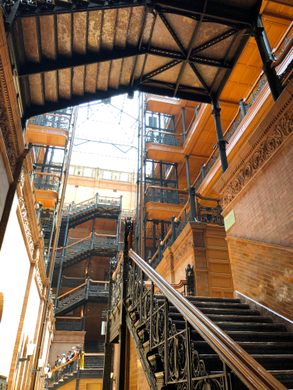


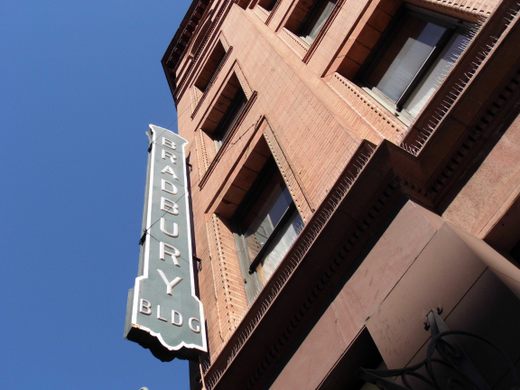












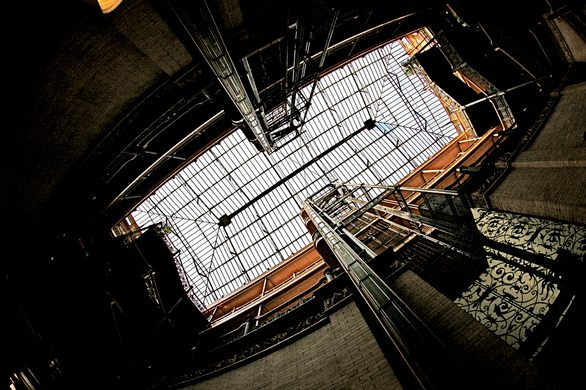





















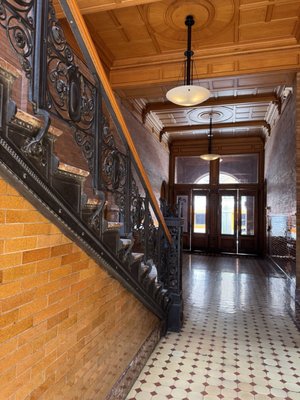






















"Along a series of dilapidating structures is an unassuming office building built of crimson brick, sandstone, and terra cotta. Breach the arched entryway and be amazed by light-filled assembly of intricate iron work, terra cotta detailing, and an unadulterated skylight that stretches over the entire inner atrium, providing natural light to the building for most of the day. Constructed in 1892, the building’s materiality and aesthetic make it feel as if you’re stepping onto the Titanic - a complete atmospherical surprise after traversing buzzing and gritty streets of Downtown LA." - Canopy

"Finished in 1893, the interior atrium is the real revelation: a Victorian-style space with open-cage hydraulic elevators, marble staircases, wrought-iron balconies, and a massive skylight that creates a haunting, magical mood; designed by George Wyman (who had almost no formal training), the building is still used for offices and is recognizable from films like Chinatown and Blade Runner." - Maxwell Williams


"A late-19th-century architectural landmark celebrated for its ornate ironwork, polished marble surfaces, and vintage cage elevators, offering a must-see example of historic downtown design and craftsmanship." - Patricia Doherty Patricia Doherty Patricia Doherty is a writer who specializes in covering destinations, resorts, and cruises for Travel + Leisure and other publications. Travel + Leisure Editorial Guidelines

"Mining mogul Lewis L. Bradbury had a grandiose vision for a 5-story building in the heart of Los Angeles, and he was convinced only one man could build it for him. Reluctant draftsman George Wyman wanted no part of the project, and remained stubborn until conferring with his dead brother via planchette board. Despite being six feet under for just as many years, Mark Wyman’s message was clear- the job would bring success. So George Wyman acquiesced, and the Bradbury Building came into being. Heavily influenced by the utopian sci-fi novel “Looking Backward” by Edward Bellamy, the vast structure is magnificent in its intricacies. The outside isn’t overly inviting, but once inside, you enter a gorgeous center courtyard filled with natural light streaming in from a skylight. Caged elevators, surrounded by ornate wrought iron used abundantly on the many staircases cast shadows around the courtyard. Used as a set for numerous films, notably Blade Runner, the lacework balconies appear in all sorts of popular culture venues, influencing film, TV, comic books, music videos and video game designs. The strongest bond that the Bradbury Building has in popular culture remains with Science Fiction. Not only was its design inspired by a sci-fi novel and its courtyard the ideal setting for films of the genre, Wyman’s grandson was science fiction publisher Forrest J. Ackerman. It is a common misconception that the building was named after Ray Bradbury, Ackerman’s close friend and famed sci-fi author, but the author sharing a name with the founder is merely a coincidence." - ATLAS_OBSCURA


"Mining mogul Lewis L. Bradbury had a grandiose vision for a 5-story building in the heart of Los Angeles, and he was convinced only one man could build it for him. Reluctant draftsman George Wyman wanted no part of the project, and remained stubborn until conferring with his dead brother via planchette board. Despite being six feet under for just as many years, Mark Wyman’s message was clear- the job would bring success. So George Wyman acquiesced, and the Bradbury Building came into being. Heavily influenced by the utopian sci-fi novel “Looking Backward” by Edward Bellamy, the vast structure is magnificent in its intricacies. The outside isn’t overly inviting, but once inside, you enter a gorgeous center courtyard filled with natural light streaming in from a skylight. Caged elevators, surrounded by ornate wrought iron used abundantly on the many staircases cast shadows around the courtyard. Used as a set for numerous films, notably Blade Runner, the lacework balconies appear in all sorts of popular culture venues, influencing film, TV, comic books, music videos and video game designs. The strongest bond that the Bradbury Building has in popular culture remains with Science Fiction. Not only was its design inspired by a sci-fi novel and its courtyard the ideal setting for films of the genre, Wyman’s grandson was science fiction publisher Forrest J. Ackerman. It is a common misconception that the building was named after Ray Bradbury, Ackerman’s close friend and famed sci-fi author, but the author sharing a name with the founder is merely a coincidence." - ATLAS_OBSCURA
